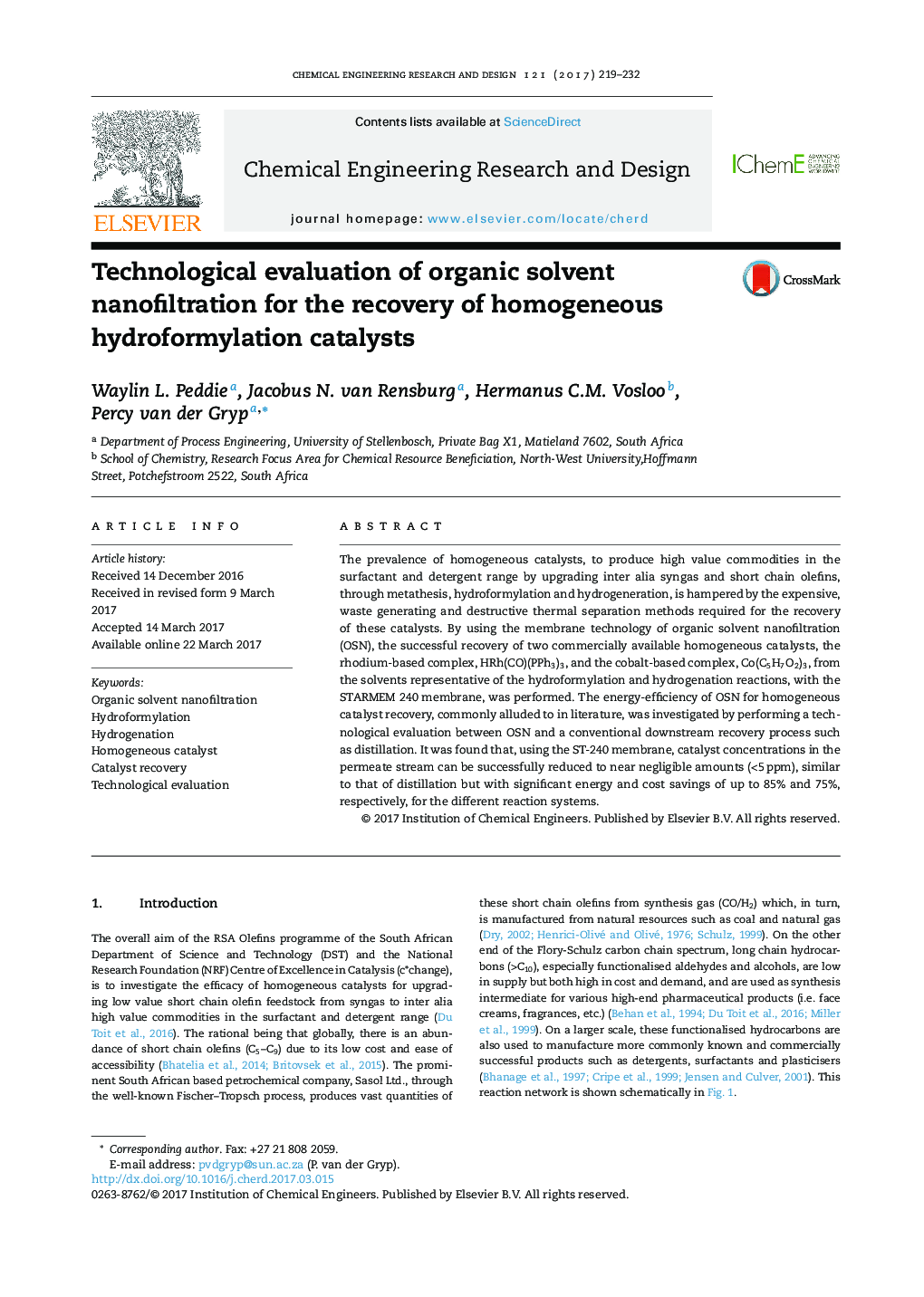| Article ID | Journal | Published Year | Pages | File Type |
|---|---|---|---|---|
| 4987051 | Chemical Engineering Research and Design | 2017 | 14 Pages |
Abstract
The prevalence of homogeneous catalysts, to produce high value commodities in the surfactant and detergent range by upgrading inter alia syngas and short chain olefins, through metathesis, hydroformylation and hydrogeneration, is hampered by the expensive, waste generating and destructive thermal separation methods required for the recovery of these catalysts. By using the membrane technology of organic solvent nanofiltration (OSN), the successful recovery of two commercially available homogeneous catalysts, the rhodium-based complex, HRh(CO)(PPh3)3, and the cobalt-based complex, Co(C5H7O2)3, from the solvents representative of the hydroformylation and hydrogenation reactions, with the STARMEM 240 membrane, was performed. The energy-efficiency of OSN for homogeneous catalyst recovery, commonly alluded to in literature, was investigated by performing a technological evaluation between OSN and a conventional downstream recovery process such as distillation. It was found that, using the ST-240 membrane, catalyst concentrations in the permeate stream can be successfully reduced to near negligible amounts (<5Â ppm), similar to that of distillation but with significant energy and cost savings of up to 85% and 75%, respectively, for the different reaction systems.
Keywords
Related Topics
Physical Sciences and Engineering
Chemical Engineering
Filtration and Separation
Authors
Waylin L. Peddie, Jacobus N. van Rensburg, Hermanus C.M. Vosloo, Percy van der Gryp,
